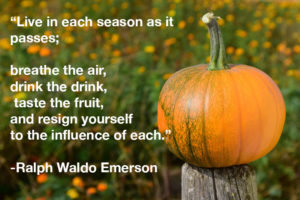October is Energy Awareness Month! No surprise this is one of our favorite times of year at swrm. It conjures up images of leaves changing color, adding a smear of reds and yellows, browns and oranges to a horizon that seems best suited for a frame and hung up on a museum wall somewhere. As a brisk breeze begins to blow, fashionistas throw themselves on their hands and knees, reach under their beds and pull out the plastic bins that imprison their cold-weather clothes: it’s finally time for sweaters and layers- lots and lots of layers.
That isn’t the case for friends south of the equator, however, as they’re more likely to start peeling clothes off than layering them on. Because the Earth’s axis is on a tilt, October is springtime for Australians, Zimbabweans and every Southerner in between. For better or worse, it doesn’t matter whether the weather is cooling down or heating up. Tradition holds that it’s the beginning of harvest time, when the sweat and toil of the spring and summer months begin to bear fruit. It’s a clear example of Northern Hemisphere Bias, but it explains why cultures in every corner of the globe mark the season with holidays celebrating the Earth’s bounty.
 And Earth certainly is bountiful. It boggles the mind when considering the variety of fruits and veggies readily available at grocery stores in developed countries. What’s more, if fancy strikes, advances in agricultural technology make it possible for pumpkin freaks to get their fix year-round. That, however, isn’t a very efficient practice. To defy nature and produce off-season fruits and vegetables requires an enormous amount of energy. It has happened to everyone, though perhaps not with pumpkins. There really is no accounting for taste!
And Earth certainly is bountiful. It boggles the mind when considering the variety of fruits and veggies readily available at grocery stores in developed countries. What’s more, if fancy strikes, advances in agricultural technology make it possible for pumpkin freaks to get their fix year-round. That, however, isn’t a very efficient practice. To defy nature and produce off-season fruits and vegetables requires an enormous amount of energy. It has happened to everyone, though perhaps not with pumpkins. There really is no accounting for taste!
How about that summer peach? The first juicy bite sends the taste buds into a frenzy; eyes roll back in their sockets and suddenly you’re transported onto the porch of a grand ol’ Georgia plantation house. When you come to, it’s the constant pursuit of that first bite, but that mid-winter peach just doesn’t do the trick. You’re not mistaken: it doesn’t taste as good. It’s also less nutritious. These greenhouse grown offerings cannot compare to the au naturel Prunus persica.
There are only two ways of getting off-season produce. One method would be to transport the food from a part of the world where it is in-season. At the risk of stating the obvious, transportation requires energy and, unless it’s a completely clean form of energy (not likely), that means more carbon emissions. That’s not even considering the energy required to refrigerate food while it’s en route! Look out for the next swrm article that will go more in depth on the concept of food miles.
The other method of producing off-season produce inevitably involves the use of greenhouses. The term, to the environmental community, recalls the gases that let loose atrocities onto the ozone. The physical “brick and mortar“-though, in this case, it really ought to be “glass and steel”- greenhouses aren’t any better. In order to grow summer fruits in the middle of winter, farmers must recreate the conditions that lead them to ripen. That means, the temperatures must mimic those during the dog days of summer. Additionally, the process of photosynthesis by definition (“photo” meaning light) requires the use of sun lamps. It is a fitting name because these lamps have the hefty task of replacing the sun, and must literally recreate its production of 10,000 lumens! As a comparison, a standard 60-watt bulb only produces 800 lumens.
Cornell University, an Ivy League with one of the most respected Agricultural Sciences programs the world over, recently released a breakdown of the energy footprint of their greenhouses. Their largest facility shows that the impact of greenhouses on the environment is no joke. The Guterman Greenhouse guzzles the equivalent of 215,000 gallons of gas per year. That’s about 1,640 cross-country trips, producing over 3 million pounds of CO2 annually.
The moral of the story: eat seasonally and locally. It’s the healthier choice for your body, your pocketbook and for the planet. If you want to take it a step further, go organic! Research suggests that fruits and vegetables produced organically are much more energy efficient than those produced with pesticides and other chemicals.
Click here to explore the different types of foods that are in-season no matter your season!



